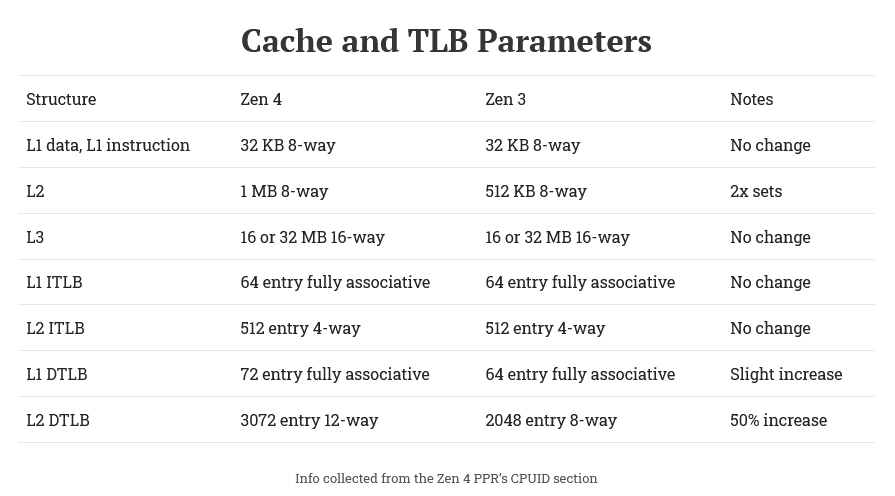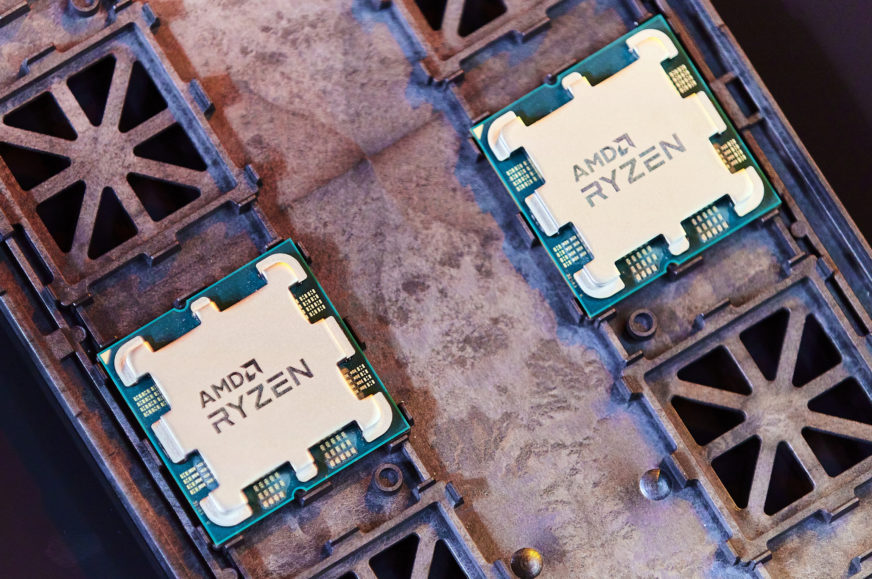AMD will have a new generation of processors out much sooner than at the end of the year
Finally getting new architecture in desktop (and finally using a modern manufacturing process) has reinvigorated Intel processors. It looks like AMD is under pressure now, as it has reportedly decided to make a move that doesn’t happen often: its much-anticipated next generation of 5nm processors with Zen 4 architecture may be coming to market much sooner than originally planned. Presumably to respond to Intel’s consolidation.
Previous information was that the release of the Ryzen 7000, which will be the first processors with Zen 4 cores, as well as their platform with the new AM5 socket will only happen in the last quarter of this year. However, the reputed leaker Greymon55 has now come out with the news that AMD is changing the plans and the prior expected dates are no longer valid. It’s not yet clear if there has been any change to the release schedule for the new Radeon RX 7000 graphics with RDNA 3 architecture, but where a change is said to be confirmed, is in the desktop processors.
ZEN4 Q4 ❌
— Greymon55 (@greymon55) February 11, 2022
According to Greymon55, it is no longer the case that the release of Ryzen 7000 is to be in the fourth quarter, AMD now wants to launch them in the third quarter, during the summer. They even say it does not necessarily mean the end of the quarter (September), but it can come a bit earlier, though of course this is probably all to be taken with a grain of salt for now. But if this is true, AMD will probably reveal these processors at Computex 2022 in late May/June, or at subsequent shows like E3. Expecting the physical availability right away in July is probably a bit much, but perhaps the optimistic scenario could be that Zen 4 will be available in stores in August.
Earlier than that.
— Greymon55 (@greymon55) February 11, 2022
The AM5 platform motherboards will naturally come out with the processors. These are said to be reaching the sampling stage soon, and “production samples” should be available this month or so. According to Greymon55, the 5nm Ryzen 7000 could be followed by the desktop version of the 6nm Ryzen 6000 “Rembrandt” APU for the AM5 platform with Zen 3 cores and RDNA 2 graphics. But it’s not clear if their arrival has also been accelerated, they could instead be released only late in the year in Q4 2022.

What to expect from Ryzen 7000
Ryzen 7000 processors with Zen 4 architecture should have significantly improved power efficiency thanks to the 5nm process node, making them superior to Intel’s 7nm Alder Lake and future Raptor Lake processors in multi-threaded applications. Since a newer process might also be used for I/O chiplets, perhaps the now worse idle and low-load efficiency of Ryzen 5000 could also be improved by Ryzen 7000. The AM5 platform will also provide PCI Express 5.0 and use DDR5 memory, so it will catch up in tasks where Intel’s higher bandwidth now helps their cores against Zen 3.
Tip: AM5 socket and Ryzen 7000 shown. Zen 4 capable of 5 GHz all-core
Performance should improve thanks to the higher IPC (performance per 1 MHz) of the Zen 4 architecture, but it’s probably a good idea to temper your expectations for now – it’s uncertain whether AMD will be able to catch up, let alone overtake the single-core performance lead of Intel’s high-clocked processors (the Core i9-12900KS is supposed to run at up to 5.5 GHz). If you’ve seen any projections of expected high (>20%) IPC increases for Zen 4, they are probably unfounded. There haven’t been any relevant leaks haven’t yet as far as we know.
What we know so far about the Zen 4 architecture is that it is in fact an evolution of Zen 3 and seems to not be making drastic changes. For example, the number of compute units in the backend does not appear to change (there’s still going to be just four ALUs). From these characteristics, we would expect an increase in IPC more like that shown by Zen 2, which was also an evolution of Zen 1 – this means an increase of say 8-15%. Hoping for more (an increase in IPC of say 20-30%) would be appropriate if the processor core was significantly overhauled and we knew, for example, that it had been expanded to include additional instruction decoders and ALUs/AGUs, which Zen 4 does not seem to do.

What we know will change inside Zen 4, is the L2 cache, which will grow from 512 KB per core to 1 MB per core. Furthermore, there is already a lot of evidence that AMD will introduce AVX-512 instruction support to Zen 4 for the first time (ironically at a time when Intel itself is quite ambivalent about it). However, the 512-bit ops will probably still use the same 256-bit SIMD units Zen 3/Zen 2 has, so this may not bring much extra performance to Zen 4 yet. The importance of this support may be mainly in application compatibility, while performance could then increase with Zen 5.
Earlier arrival: rough edges and teething problems?
There may also be aspects to these accelerated plans that will be less than positive. Hopefully the earlier release won’t mean some serious problems and unfinished features on release. Earlier generations of Ryzen used to have a reputation for unfinished board BIOSes and AGESA firmware that were still subject to developmental changes months after release.

Since AM5 will be a new platform with a new type of memory, fine-tuning it will probably be more challenging than, for example, the release of the last generation Ryzen 5000 on the existing AM4 platform was. Hopefully a rushed release won’t bring too many of these negatives.
Also, there could be a problem with the fact that with an earlier release there will be worse availability and less supply of processors in stores,upon the launch.
Sources: Greymon55 (1, 2, 3, 4, 5, 6, 7)
English translation and edit by Jozef Dudáš, original text by Jan Olšan, editor for Cnews.cz
⠀








